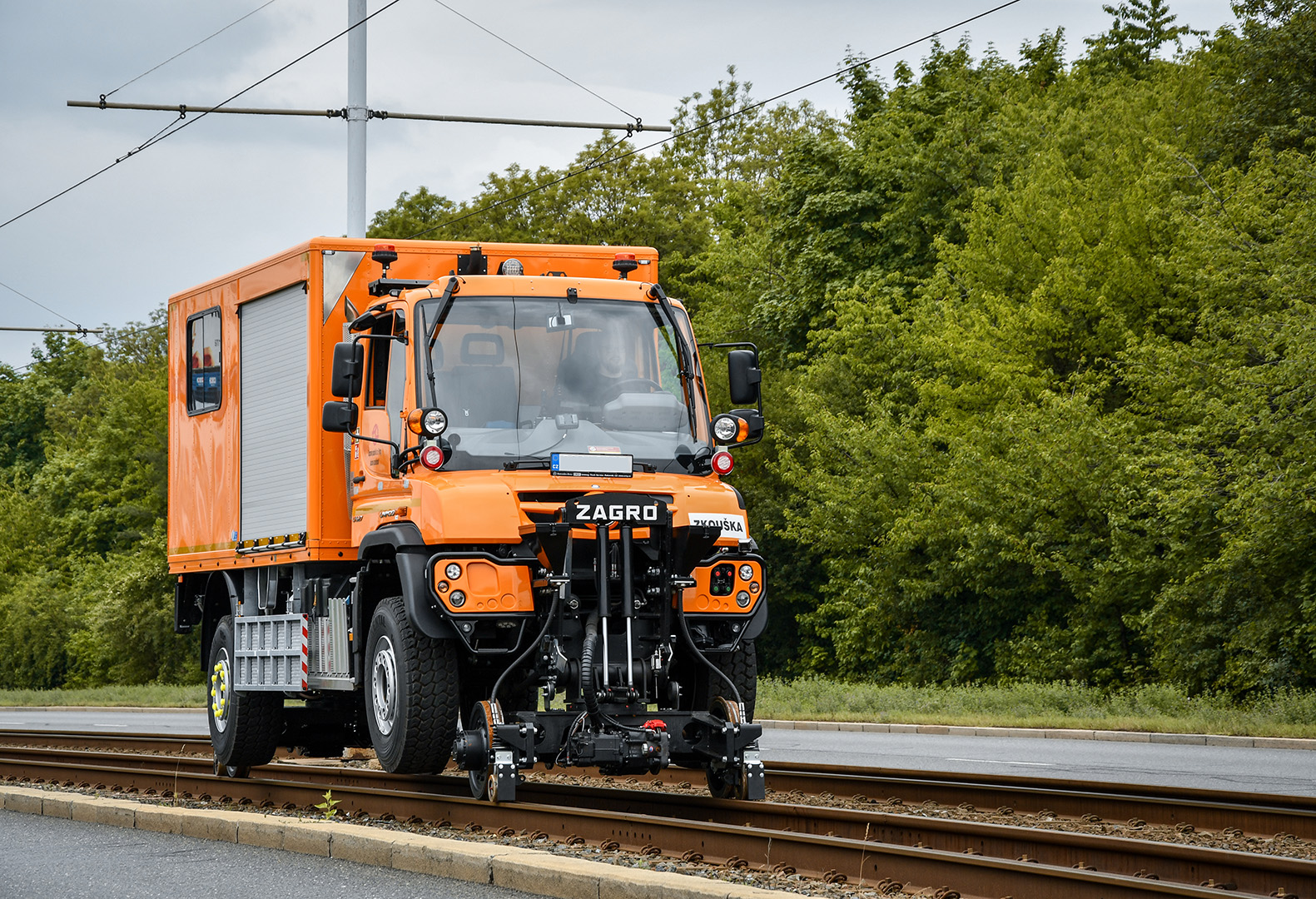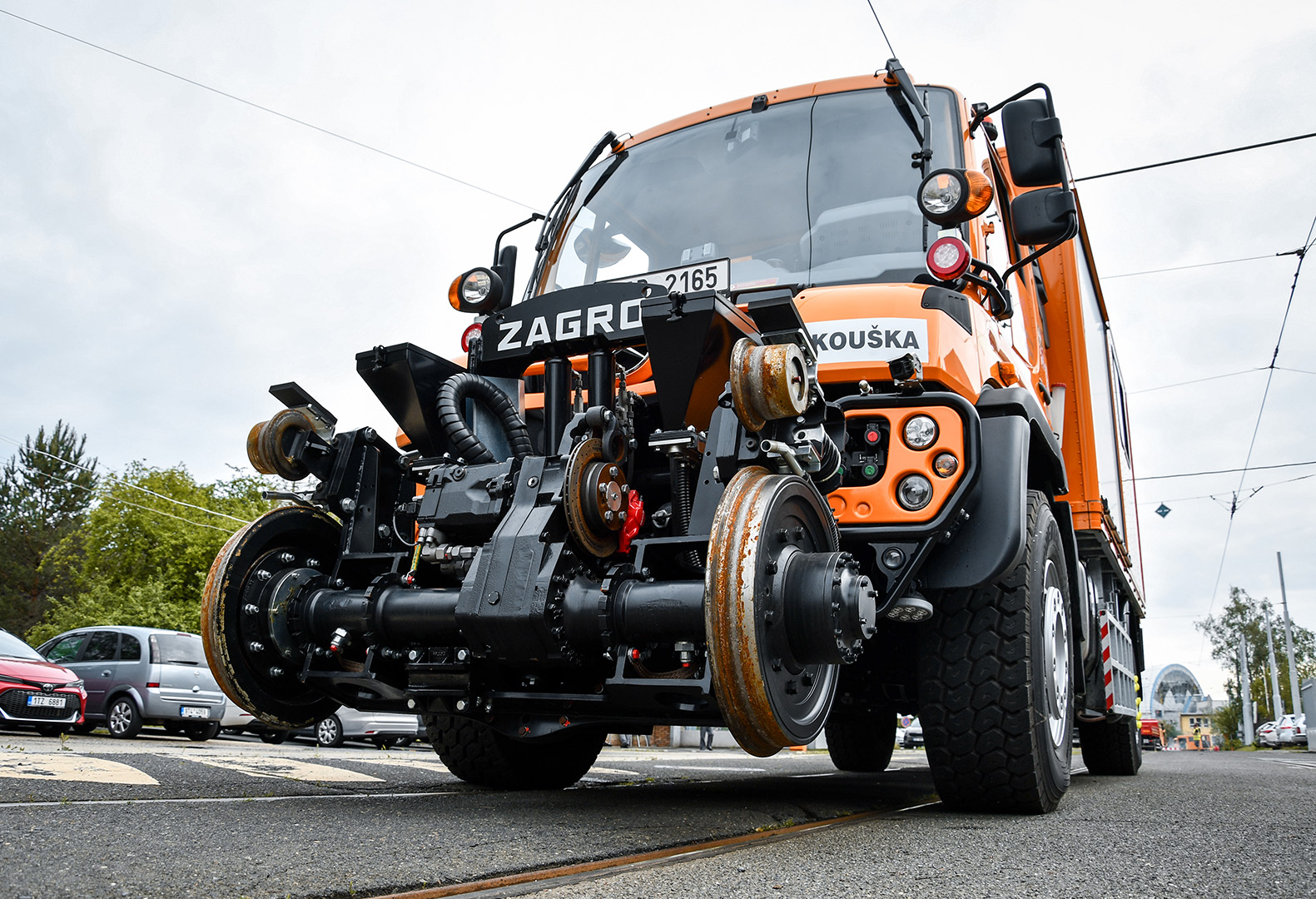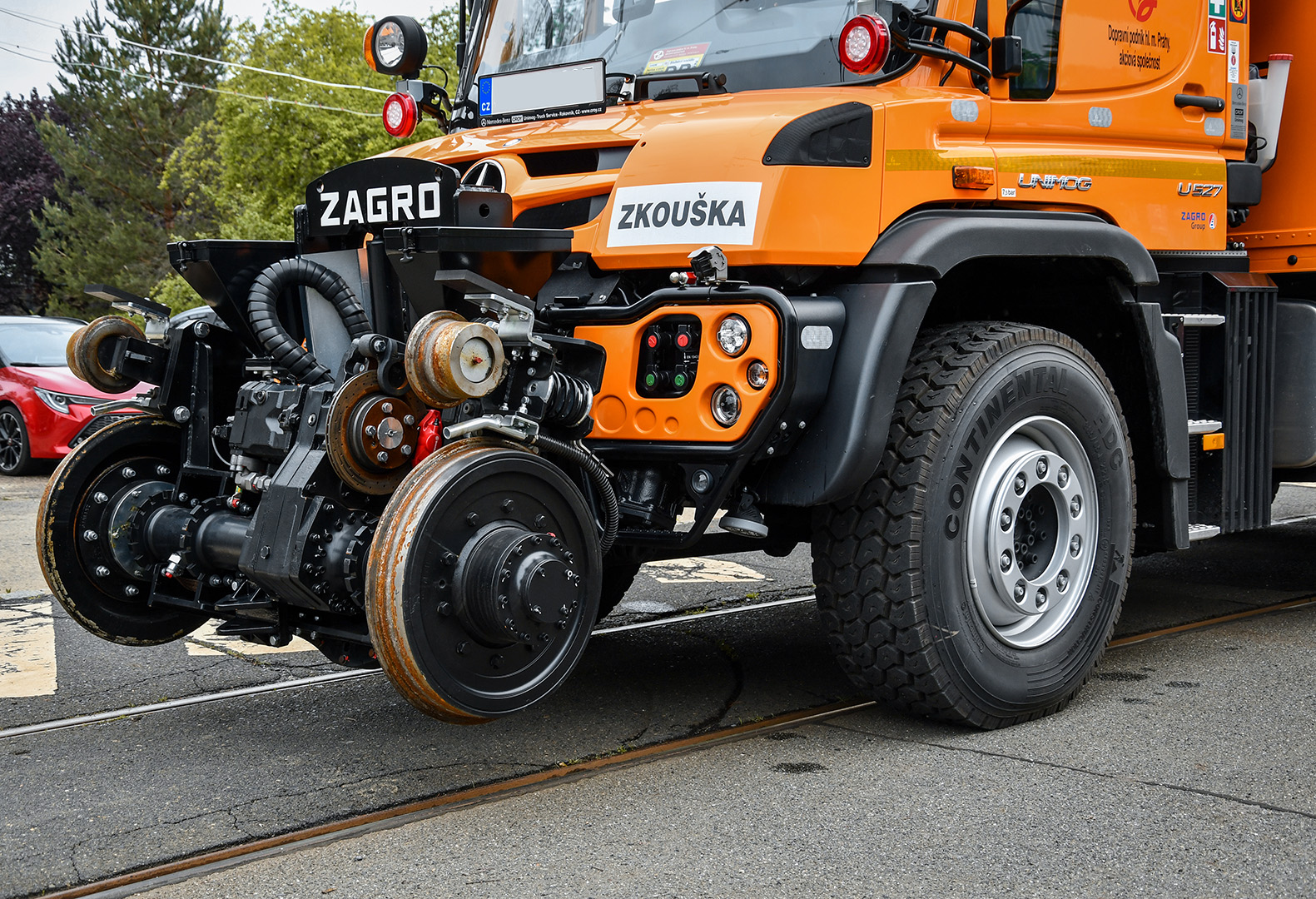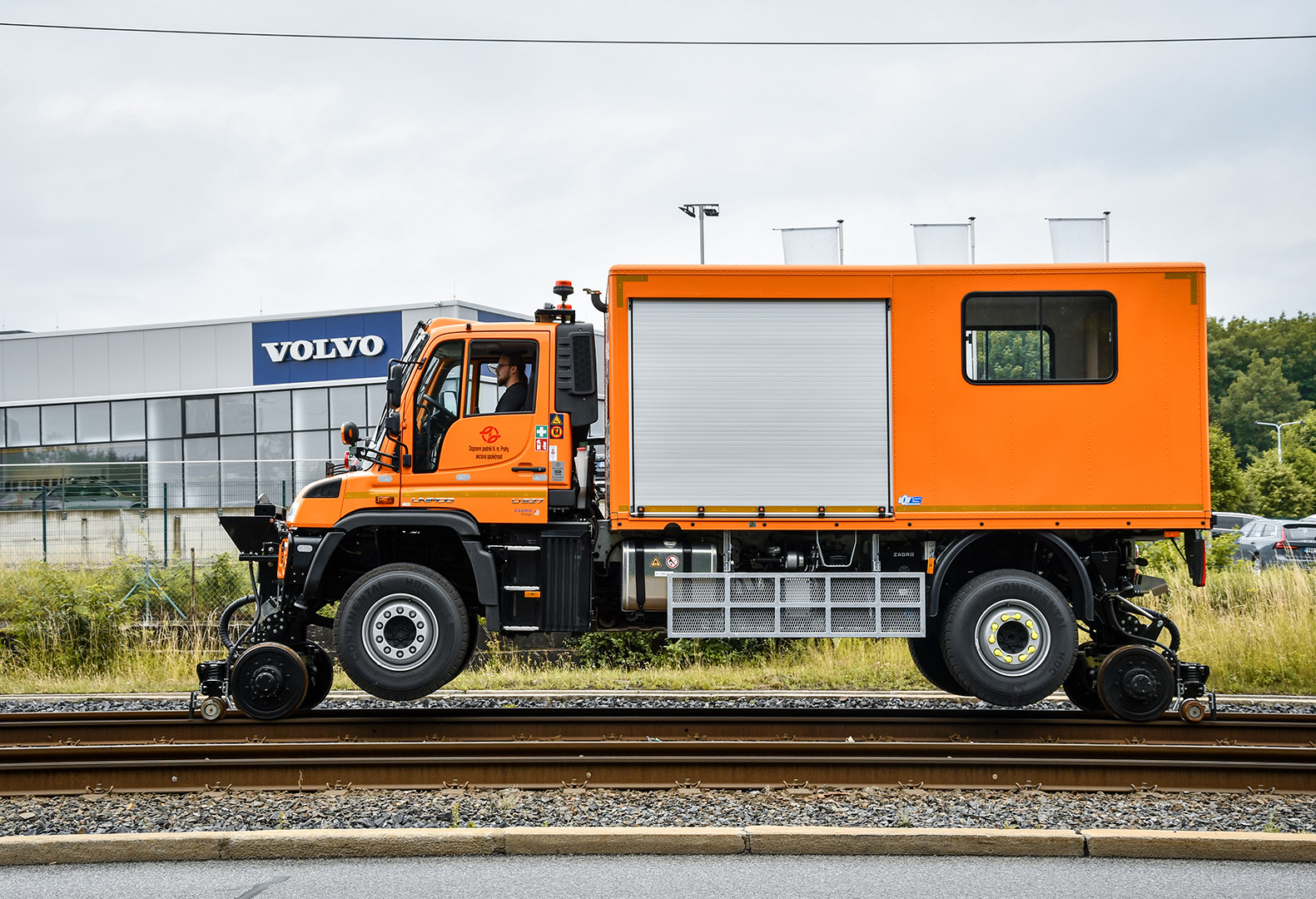For the public transport company DPP of the Czech capital Prague, we made a new development in the field of rail driving equipment. At the customer's request, ZAGRO designed and fitted the hydrostatic rail driving device for the first time for the Unimog model series from Mercedes-Benz. Previously, only trucks had been equipped with this device for alternating operation between road and rail.
Another special feature was the basic Unimog model. Usually, ZAGRO modifies Unimogs of the UGE series (U423, U427, U430) for rail operation. But thanks to the newly developed hydrostatic rail guidance, the basic model U527 was upgraded for rail operation for the customer. The vehicle capacity is 270 HP and a permissible gross weight of 16 tonnes.
In general, driving on tracks is not possible with wide road wheels like those installed on Unimogs or trucks, for example, due to attached sensors in the track area.
However, the road wheels are raised by the hydrostatic rail guidance system to such an extent that they do not touch the tracks. It must be ensured that a safety space of 60 mm is maintained between the tracks and the road wheels.
The special feature of this rail guide system is the hydraulic drive. In contrast to the turntable, the rail wheels are not driven by the road wheels but by hydraulic pressure. This allows both acceleration and braking on the rails. In an emergency, the vehicle also has a parking brake.
Driving on narrow radii of up to ≥ 18 m in different rail gauges is also possible without any problems. To make this possible, it was necessary to design the axle of the hydrostatic travel drive and the rail wheels with the running circle diameter of 570 mm steerable. For this purpose, the axle was equipped with a slewing ring on the chassis. During cornering, the axle is steered by spring-loaded guide wheels, which have a running circle diameter of 158 mm. These smaller guide wheels are mounted in front of the actual track wheels.
The steering movement of the axle is damped by rubber elements analogous to the turntable design. To prevent the hydrostatic axle from swivelling uncontrollably to the side during track mounting and dismounting, deflectors are fitted to ensure that the axle remains safely in a horizontal position during road operation.







